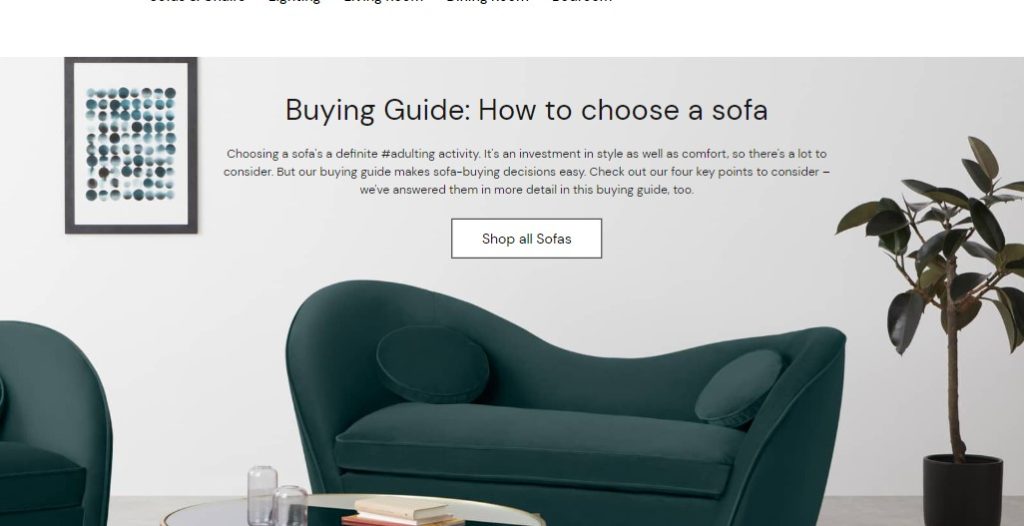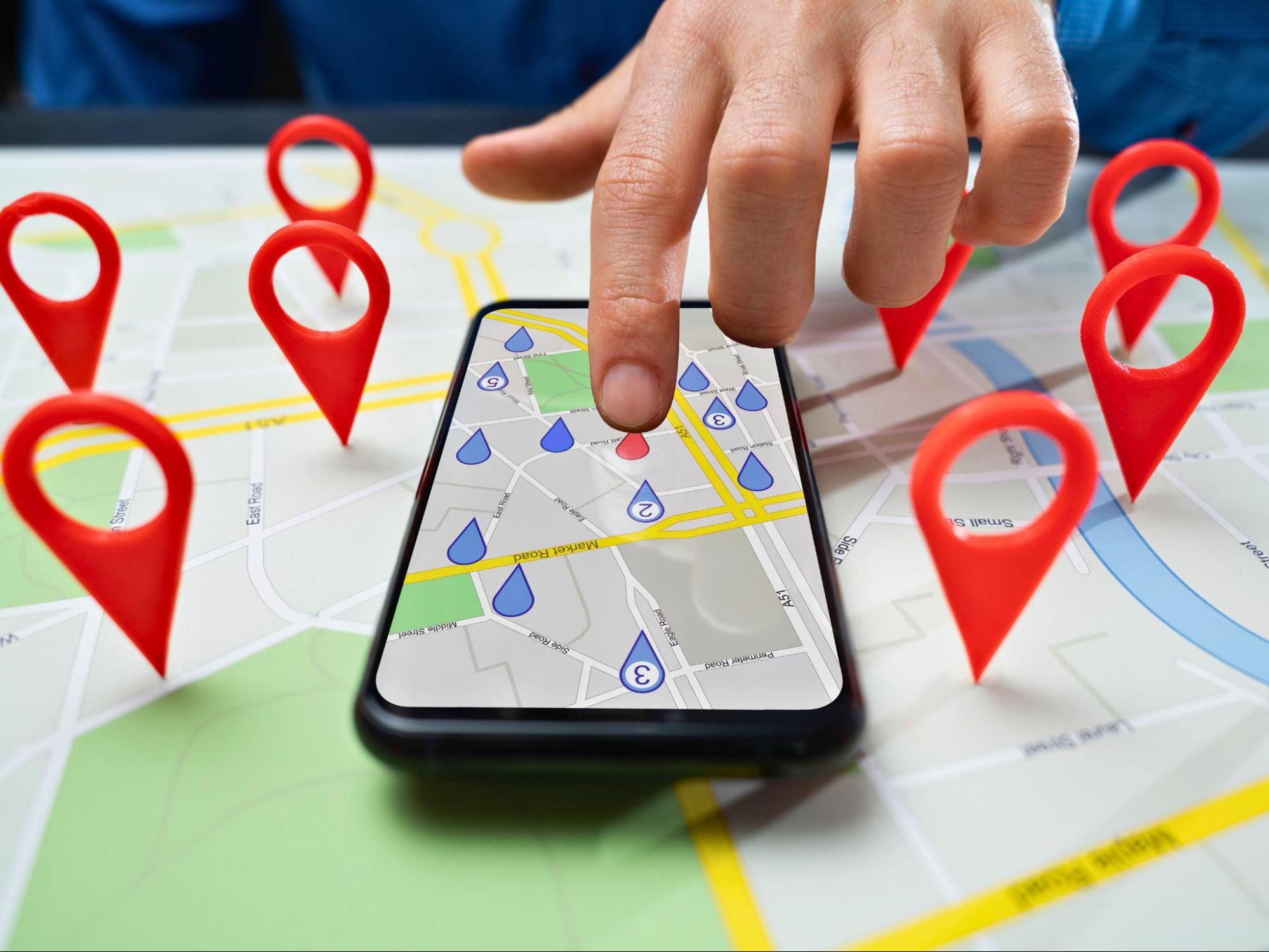Content Marketing Tips for Ecommerce Sites: How Blogging Can Drive Conversion
Content marketing is an incredibly useful digital marketing tool to have in your arsenal. It can help you establish yourself as a trustworthy, reliable source of information, improve your rankings, and help your target audience find you. It can also increase your conversion rates and overall engagement scores.
Quick Links
So how can you, as an ecommerce brand, make the most of content marketing and create the kind of blog posts that resonate? Here are seven tactics to try:
Be Bold with Product Page Links
One of the most obvious ways to increase conversion rates through blogging is to optimize blog posts with plenty of product page links.
When a visitor clicks through to your blog post, they are not likely to also start browsing your store. They will read what they came for and most likely click back to the SERP. If you provide plenty of incentive for them to keep browsing, they are more likely to check out a product page.
Admittedly, there are those who will argue that making blog posts too promotional can backfire. If you appear to be pushing a sale, or if the sole purpose of the blog post seems to be to promote a product, your audience might take a grim view of this tactic and refuse to cooperate.
This is why you should try to find a good way to include product links without making them appear too promotional. This guide on groomsmen socks is a good example of getting it right.
The post contains dozens of product page links, but they are never inserted in a “buy this product now” manner. They are more of a gentle notification: the brand is telling its readers that they offer socks they might be interested in checking out.

Source: sokisahtel.net
Give Potential Customers a Reason to Return to Your Site
It’s not enough for a customer to find your website once and never return. In order to drive more conversions, you will want to incentivize visitors to keep coming back.
A blogging tactic that can help with this goal is publishing posts on evergreen topics that are likely to see continuous interest. These are the kinds of topics people always search for. They are often published in the form of ultimate guides, how-to guides, or in-depth articles.
Consider your audience’s pain points. What would they like to know, and what do they keep searching for? Don’t forget that the topic needs to be tied to your brand, and you need to be able to write about it from a place of experience and expertise. Also, try to connect the topic with your products.
Here’s a great example. This post on which planets are visible tonight gets updated every month. It’s a topic astronomers will google often, and it gives the brand a chance to attract the same visitors over and over.
Covering this evergreen topic on one page and continuously updating it is a better choice than publishing a new post every month. These new pages wouldn’t have the time to rank, and you would be spreading value across multiple pages with no real benefit.

Source: lovethenightsky.com
Make Content Visually Appealing
In order for a piece of content to have a higher chance of converting a visitor, it should not only be written well but also look good.
Humans are visual creatures. They won’t enjoy reading through a post that has been published as a wall of text. They will be daunted by skimming through a post that contains zero visuals and is just paragraph after paragraph of text.
Try to include different kinds of visuals in your blog posts. Ideally, you will want to feature product photos wherever possible. At the very least, try to include the product in the photo. For example, if you are a cutlery brand doing a post on kitchen shelf organization, take photos to illustrate your points, and include your items unobtrusively.
This post on the beard tools you need and don’t need is a good example of using various visual formats. They have featured a video, an Instagram post, and an image to break up the text. All the visuals are also directly connected to the topic of the paragraph, so they seamlessly blend into the rest of the page.

Source:beardbrand.com
Answer Common Questions
Answering common questions about a topic in your blog content is another great way to improve conversion rates. Of course, you’ll need to apply this tactic on your product pages, but it definitely has its place on the blog as well.
Think about the questions customers are likely to have. What is it about a topic they want to know? What are they most likely to google?
Check out this post on the best bedroom colors for sleep. It wraps up with an FAQ section that gives short answers to the most common questions related to the topic. This is a great way to both rank better and make your content more user-friendly.
You can use the same tactic to overcome common conversion obstacles. Think about the qualms that a customer might have about making a purchase, and aim to alleviate them by addressing their questions and concerns.

Source: nectarsleep.com
Create In-Depth Buying Guides
This content format can significantly contribute to increased conversions. The goal of in-depth buying guides is to help your customers make an informed purchasing decision. It’s great for user experience, and it will also show your customers that you care about their satisfaction rather than just about making a sale.
The main purpose of this kind of article is to provide information and teach the reader something. Its secondary aim is to recommend your products. Ideally, you want the product recommendations to seem like an afterthought.
Cover all the most common pain points and provide actionable advice. Your post should be the only one a reader needs to learn everything they need to know. If they walk away from it with numerous questions, you will not have done a good job.
Take a look at this sofa buying guide. It lists the steps needed to choose a sofa and then provides concrete advice about each step. It goes into detail about the different types of sofas, the materials used for them, and whom they would suit best.
Only at the end of the article can you find specific product recommendations. The brand has provided its readers enough space to educate themselves, and only then does it remind them that there are sofas they might like close by.

Source: made.com
Appeal to Various Funnel Stages
When creating blog content, make sure that you target customers in various stages of the buyer’s journey. If you only write content for those who are still in the awareness stage, you’ll be missing out on the opportunity to target those who are already in the decision-making stage.
Creating these various types of content will also make your blog more diverse and more helpful. This will help you tick Google’s latest helpful content guidelines better, establishing yourself as an authority.
When writing a blog post, consider the reader’s level of knowledge and their unique perspective. Someone who has just started to explore making a purchase will look for topics about using the product, its benefits, and how it can fit into their lifestyle. Someone who is ready to buy will want to compare products.
For a good example of blog posts that target all the buyer’s journey stages, check out Northern Brewer’s knowledge base. They have an entire section dedicated to first-time brewers, where they teach readers how to make their own beer from scratch. They explain all the terms, equipment, and the process.
They also have topics for experienced brewers, like how to add flavors to a beer, the differences between kegs, and more advanced recipes.

Source: northernbrewer.com
Wrapping Up
Are you already using any of these content marketing tactics? If not, which one do you think would most appeal to your target audience?
Before you start applying them, take a moment to analyze which one would best fit into your current digital marketing strategy and which one you would be able to execute best.
Top 10 Magento 2 SEO Extensions to Boost Your Store’s Visibility
SEO is the key to a successful store! Have you ever given thought, if your store is simply…
0 Comments12 Minutes
How to Optimise Your PPC Campaigns with AI
As the methods of Internet marketing evolve, Pay-Per-Click (PPC) advertising remains one of the…
0 Comments10 Minutes
Putting Cybersecurity Under the Spotlight: How Security Audits Strengthen Your Defenses
While organizations understand the importance of cybersecurity, there is an opportunity for many…
0 Comments12 Minutes
How Marketing Agencies Can Choose the Best High-Performance SEO Tools
High-performance SEO tools combine comprehensive features, durability, speed, and accuracy. They…
0 Comments9 Minutes
Simplify the Running of Your Business With These Tips
Finding enough hours in the day to tackle all the jobs on your to-do list can be a major issue…
0 Comments4 Minutes
Best SEO Practices for Multi-Location Businesses
Businesses operating across multiple locations benefit from unique opportunities but also face…
0 Comments7 Minutes
Unveiling the 7 Essential Components for an Exceptional Website
Even a beginner can identify what makes a good website, but when it comes to building one, things…
0 Comments8 Minutes
Top Blockchain Trends to Watch in 2024
Blockchain has time and again proved its capacity to redefine many sectors and this prediction of…
0 Comments6 Minutes








